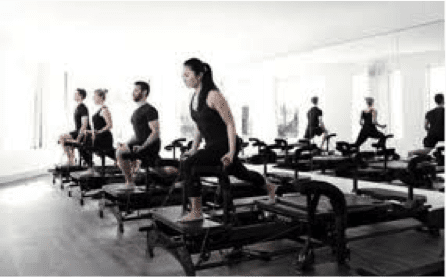Americans seeking to stay healthy can get their exercise in small increments of just a few minutes at a time, according to new guidelines issued by the government in November 2018.
The substance of the material is to encourage a largely sedentary nation to start moving. The goal is to “sit less and move more” in an attempt to mobilize a country where about 80 percent of the population is not getting the minimum amount of recommended physical activity. The guidelines were published in the Journal of the American Medical Association.
The experts wrote that the “Current evidence shows that the total volume of moderate-to-vigorous physical activity is related to many health benefits; bouts of a prescribed duration are not essential”.
Research has shown that short bouts of exercise are valuable to break up long stretches of sitting and they appear to have the same impact as one longer sessions. For adults to stay healthy, the new guidelines call for 150 to 300 minutes of moderate-intensity exercise or 75 to 150 minutes of vigorous-intensity physical activity each week, along with at least two days a week of muscle-strengthening exercises. They cite walking briskly at 2.5 to 4 miles per hour, playing volleyball or raking leaves as moderate-intensity activity. Vigorous-intensity exercise includes jogging or running, carrying heavy groceries or taking a strenuous fitness class. Some workouts, such as swimming and cycling, can fall into either category, depending on the effort expended.
Children and teens ages 6 to 17 should get 60 minutes of vigorous activity every day, plus three days a week of activity that strengthens muscles, according to the recommendations.
I also recommend older adults (50 +) should do exercise to improve balance as well as cardio and muscle-strengthening workouts.
For the first time, the guidelines include a recommendation for preschoolers, noting that children ages 3 to 5 “should be physically active throughout the day to enhance growth and development.” There is also specific advice for pregnant and postpartum women and people with disabilities.
In a nutshell, we have become more aware of the benefits of movement. These include reducing the risk of cancer, anxiety and depression; improving cognitive function and sleep; aiding bone health and regulating weight gain in preschoolers; protecting against weight gain, gestational diabetes and postpartum depression in pregnant women and new mothers; and decreasing the risk of falls among older people. Even a single workout can have some impact.
Deskbound workers and other sedentary people should get up and move about two minutes every half-hour. Most smartwatches these days can be set to remind you to move around and I personally use and recommend these features. “Sit less, move more. Whatever you do, it really all counts,” Brett P. Giroir, assistant secretary for health at HHS, said in an interview.
Researchers have also learned more in recent years about how damaging a sedentary lifestyle can be. The report notes that “an estimated $117 billion in annual health care costs and about 10 percent of premature mortality are associated with inadequate physical activity.”
“Being physically active,” the guidelines state, “is one of the most important actions individuals of all ages can engage in to improve their health.”
Yours in Health,
Eduardo R. Elizondo, MD, CLCP
Fellow, American College of Sports Medicine




